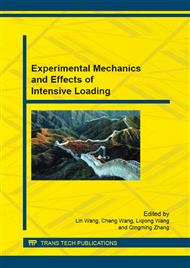p.71
p.77
p.83
p.88
p.97
p.102
p.107
p.113
p.119
Sintering Mechanism of Ti-6Al-4V Prepared by SPS
Abstract:
Ti-6Al-4V compact bulk was fabricated by Spark plasma sintering (SPS) with initial pressure of 1.7 MPa, holding pressure of 50 MPa, heating rate of 100 °C/min, and holding time of 5 min at different sintering temperature. The fracture morphology of the specimen sintered at different temperatures was observed to investigate the sintering mechanism. It can be concluded that there are four stages in the SPS process: activation and rearrangement of particles, connection of particles, growth of sintering neck and bulk deformation. The high-quality bulk compact can be obtained when the above mentioned four sintering stages proceed in turn and are all fully completed. The compact bulk has the best mechanical properties when the sintering temperature was 1050°C. The relative density of the bulk Ti-6Al-4V exceeds 99.5%. The tensile strength and the elongation of Ti-6Al-4V obtained by SPS process are 901 MPa and 13.9%, respectively.
Info:
Periodical:
Pages:
97-101
Citation:
Online since:
August 2015
Authors:
Price:
Сopyright:
© 2015 Trans Tech Publications Ltd. All Rights Reserved
Share:
Citation:


